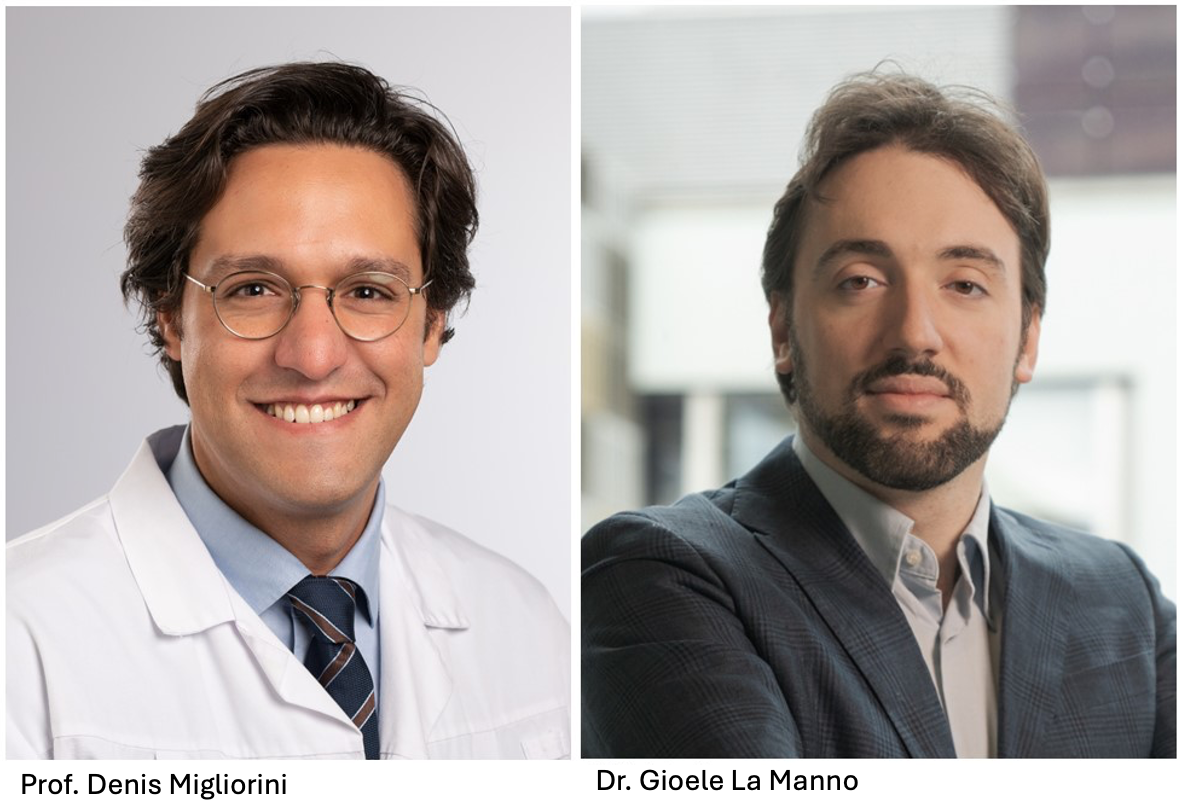Brain tumors (Glioblastoma) – Prof. Denis Migliorini (UNIGE) and Dr. Gioele La Manno (EPFL)
Analyzing tertiary lymphoid structures as part of the brain tumor environment to develop immune therapies against glioblastoma

Glioblastoma (GBM) is the most common and malignant primary brain tumor in adults. The aggressive and invasive nature of the tumor and its heterogeneity often render it resistant to standard therapies, including chemotherapy, radiation and surgery, leading to a survival rate of less than two years. In this TANDEM collaboration, the team hopes to improve the outcome of GBM treatments by advancing their understanding of the interaction between this tumor and the cellular environment that surrounds it.
Tertiary lymphoid structures (TLS) are ectopic (misplaced) parts of the lymphatic system that develop in non-lymphoid tissues, and which form, importantly, at sites of chronic inflammation such as tumors. Past work has shown that TLS are highly relevant to the prognosis of cancer patients as they form part of the cellular environment that surrounds the tumor, the TME. A major focus of anti-cancer research has been on the macrophages found in TLS, as these white blood cells can either promote or hinder tumor growth, by helping remodel the tissues that surround and support the cancer.
The researchers aim to understand how tertiary lymphoid structures interact with the TME in glioblastoma patients, in order to eventually trigger an anti-tumor immune response in the TLS. Specifically, the project will characterize the repressive TME that blocks normal immune system function, with the ultimate goal of reprogramming the TLS and combining it with CAR-T cell treatment, an advanced T-cell-specific immunotherapy in which T lymphocytes are programmed to recognize tumor cells.
Over the next three years, the team will apply cutting-edge technologies based on the in vivo imaging of gene expression in cells within normal and tumor-containing tissue sections, in order to identify and analyze the contents of the TLS. They aim to understand the intricate interactions of the lymphoid structures with the TME, which helps sustain both the tumor and the TLS. This new knowledge may serve to generate new avenues for therapy, namely the reprogramming of macrophage states in order to support the attack of programmed T cells (CAR-T) on the tumor. The extremely aggressive behavior of glioblastoma and its high mortality rate add urgency to their search for new therapies.

